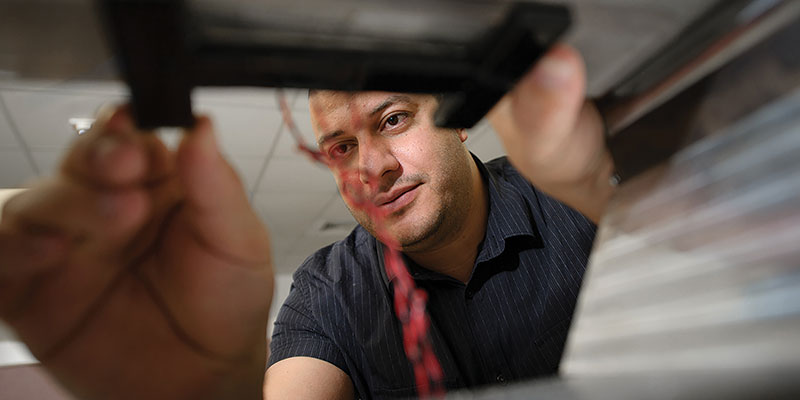Building the Feedback Loop

Building the Feedback Loop
MSU engineers helped create tiny wireless sensors used to monitor the Mackinac Bridge. Now, they're testing them for use in autonomous vehicle technology.
January 25, 2020There are 10,654 bridges in Michigan. Among them is the longest suspension bridge in the Western Hemisphere. Yes, it’s our graceful Mackinac Bridge, with a length of nearly five miles—suspended over the shimmering and often ice-packed Straits of Mackinac.
Last year, more than 4 million vehicles traveled the 62-year-old Historic Civil Engineering Landmark, affectionately known as “The Mighty Mac.”
Overseeing the bridge’s health and welfare is the Mackinac Bridge Authority, which has teamed up with engineers from MSU and Washington University in St. Louis, Missouri, to continuously monitor the structure.
In 2016, the engineers installed the first of 200 self-charging, wireless sensors and tiny recording devices beneath the bridge. Vehicle vibrations charge the low-cost sensors, which collect information that is stored in the cloud.
MSU associate professor of civil and environmental engineering Nizar Lajnef is leading the team.
The idea is to monitor infrastructure and roads accurately, easily and in a cost-effective manner. It’s a long-term plan for the next 20 to 50 years. We’ll be able to see how the bridge is behaving every single day. As soon as there’s a tiny change in the bridge, we can fix it at a very low cost. It’s like preventive health care.

Down the road, such sensors could be commonplace, not only to monitor bridges but as part of the smart infrastructure needed to support autonomous vehicles. They’ll be installed in MSU’s new Spartan Mobility Village as engineers work to test and fine-tune the technology.
Lajnef said he’s heard that some European countries might be interested in the patented technology.
At present, other sensors cost about $500 apiece. “If our sensors are mass produced, we’re looking at a cost of less than $10 each. That’s a huge cost saving for condition-based maintenance.”
Author: Paula Davenport










